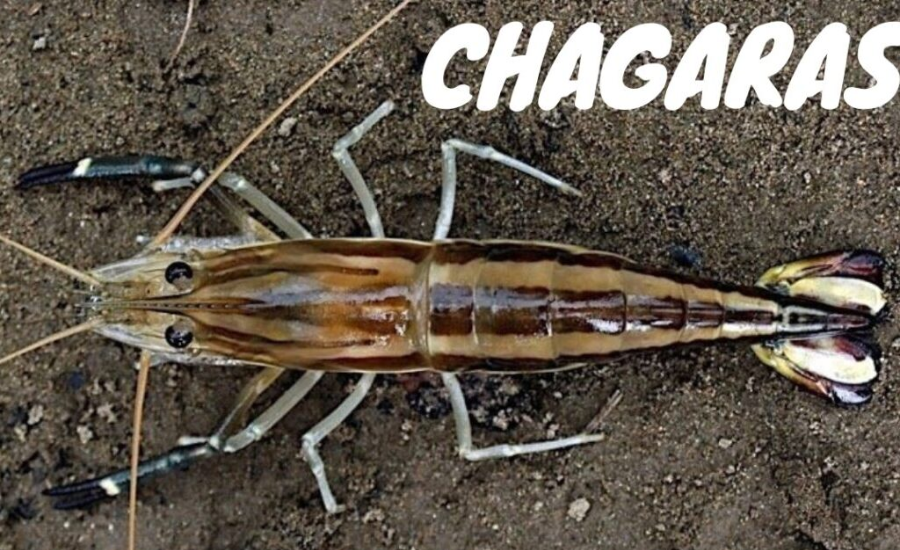Chagaras, oh, what a delightful treat steeped in tradition! It’s like a treasure chest brimming with cultural stories and old-timey charm, passed down through the ages. This delicious delight isn’t just food; it’s a piece of history that connects people across borders and time.
Let’s take a journey through the fascinating tale of chagaras. It all began with humble beginnings, you know, simple ingredients mixed with love and creativity. But now, it’s evolved into something so much more—a symbol of culinary mastery and a beautiful exchange of cultures.
In this article, we’re diving deep into the heart of chagaras. We’ll uncover its roots, explore why it means so much to so many, chat about its health perks, and marvel at the many ways it can be enjoyed in the kitchen. So, grab a cup of tea and get ready to feast your eyes and mind on the wonders of chagaras!
What Are Chagaras?

Chagaras are like enchanted treasures, deeply woven into the fabric of culture, spirituality, and artistry. They’re not just ordinary objects; they’re windows into worlds both ancient and modern, each telling a story of its own.
You see, “chagaras” or “cha-ga-ras” isn’t just a word; it’s a magical incantation that summons images of intricate wonders. These wonders come in all shapes and sizes, from ancient relics whispered about in tales of yore to contemporary marvels crafted by skilled artisans. But no matter their form, each chagaras holds secrets within its elaborate designs, secrets that speak of the traditions and beliefs cherished by the communities that birthed them.
The History Of Chagaras
Chagaras boast a captivating history that stretches back to ancient times, where they first emerged as potent symbols of culture and tradition. In their earliest forms, they served as guardians against adversity, believed to bring about fortune and prosperity to those who possessed them. As civilizations evolved, so did the intricate designs of Chagaras, weaving themselves deeper into the fabric of daily life, religious ceremonies, and communal festivities.
Over the passage of centuries, the tradition of Chagaras has stood the test of time, remaining a steadfast presence in the narrative of countless cultures. They serve as timeless reminders of strength, unity, and the enduring pursuit of beauty across generations. Like threads in a tapestry, Chagaras connect the past with the present, carrying with them stories of resilience and the collective spirit of humanity.
The Meaning Behind Chagaras: Exploring Cultural Narratives

Understanding the essence of chagaras is like unlocking a treasure trove of stories and beliefs passed down through generations. Each intricate design element holds a tale of its own, weaving together ancestral wisdom and societal values. Far from being arbitrary, the motifs and patterns etched into chagaras carry deep cultural significance and philosophical insights.
In diverse communities, chagaras symbolize various aspects of life and nature. For some, they represent fertility and the abundance of the earth, serving as reminders of our interconnectedness with the natural world. In others, chagaras are believed to possess protective powers, warding off negativity and inviting good fortune into one’s life. Deciphering these motifs is like deciphering a sacred code, where each symbol unveils a piece of communal lore and collective wisdom.
Exploring the meanings behind chagaras leads us on a journey of cultural discovery and appreciation. With every twist and turn of the design, we uncover layers of heritage and tradition, gaining insight into the values and beliefs that shape communities around the world. Through this exploration, we come to recognize chagaras not just as decorative ornaments, but as vessels of cultural identity and guardians of ancient wisdom.
The Cultural Significance Of Chagaras
Beyond being fashionable accessories, these intricately crafted pieces carry profound artistic significance within their respective communities.
Marriage and Womanhood Symbolism Among the myriad uses of Chagaras, one of the most prevalent is their symbolic association with marriage and womanhood. Across numerous African cultures, brides don Chagaras on their wedding day to mark their transition into adulthood and womanhood. The design and style of these Chagaras may vary based on lineage or ethnic group, but their significance in matrimonial customs remains steadfast. Often passed down through generations as a cherished family heirloom, the Chagaras become an integral part of the cultural heritage, symbolizing continuity and tradition.
Religious Observances Chagaras also play a significant role in religious ceremonies and rituals. In Hinduism, grooms adorn elaborate Chagaras embellished with jewels during wedding rituals, symbolizing blessings from the divine for a prosperous married life. Similarly, in Islamic societies, women adorn veils or headscarves adorned with intricate Chagaras during important religious occasions like Eid or Hajj. Here, the Chagaras serve as symbols of reverence and devotion, connecting individuals to their faith and heritage.
In essence, Chagaras transcend mere fashion accessories; they embody centuries of cultural traditions, serving as symbols of love, faith, and identity within diverse societies around the world.
Types Of Chagaras

Chagaras, with their timeless allure, have metamorphosed into a plethora of forms over the ages, each catering to distinct purposes and mirroring contemporary sensibilities.
1. Traditional Chagaras
Crafted over generations by skilled artisans, traditional chagaras stand as testaments to cultural heritage and artistic prowess. These pieces are meticulously fashioned using age-old techniques and materials, safeguarding the rich legacy passed down through centuries.
2. Contemporary Innovations
In recent years, chagaras have embraced modern influences, marrying traditional charm with contemporary aesthetics. From minimalist chic to cutting-edge styles, modern chagaras offer a diverse array of options, reflecting evolving tastes and artistic experimentation. Artists today are exploring new mediums and approaches, revitalizing the tradition while embracing the spirit of innovation.
Creating And Incorporating Chagaras Into Your Daily Routine

Chagaras, whether known as chagharas or chagras, are a versatile traditional garment adorning the vibrant corridors of India and South Asia. This adaptable piece of attire can be styled in various ways to suit different occasions and personal preferences. Here, we provide a guide on crafting your own chagara and seamlessly integrating it into your daily life.
How to Make Your Chagara:
Traditionally, chagaras were meticulously hand-woven using cotton or silk yarns, adorned with intricate designs. However, in contemporary times, they can also be fashioned from machine-made fabrics such as chiffon, georgette, or satin. Here’s a step-by-step guide to creating your chagara at home:
- Step 1: Choose the Fabric Opt for a lightweight fabric like cotton or silk for easy draping. Alternatively, printed fabrics can add a vibrant touch to your chagara.
- Step 2: Cut the Fabric Measure and cut the fabric into an oblong shape, approximately 4-5 feet in length and 3-4 feet in width.
- Step 3: Hemming Neatly fold and sew the edges of the fabric together using a sewing machine or needle and thread to create a clean finish.
- Step 4: Embroidery (Optional) If desired, enhance your chagara with embellishments. You can use various adornments like beads, pearls, or sequins to personalize your chagara according to your taste.
- Step 5: Finishing Touches Once any embroidery work is complete, iron out any wrinkles from the fabric to achieve a polished appearance.
Incorporating Chagaras Into Your Daily Life:
- Everyday Wear: Drape your chagara casually over your shoulders as a stylish accessory to elevate your everyday outfits.
- Formal Occasions: Style your chagara as an elegant wrap or shawl to add a touch of sophistication to formal attire for special events or gatherings.
- Cultural Celebrations: Embrace your cultural heritage by wearing your chagara as a traditional garment during festive occasions or religious ceremonies.
- Creative Expression: Experiment with different draping techniques and styling options to express your unique personality and fashion sensibilities through your chagara.
By following these simple steps and creative ideas, you can effortlessly incorporate the timeless elegance of chagaras into your daily wardrobe, adding a touch of cultural flair and personal charm to your everyday life.
The Role Of Chagaras Across Cultures

Chagaras hold a multifaceted role across various cultural landscapes, serving as ritual artifacts, amulets, and talismans deeply ingrained in diverse practices and traditions. Their significance reverberates through numerous facets of daily life and ceremonial traditions, reflecting their profound cultural importance.
In some cultures, chagaras are revered as sacred objects imbued with spiritual significance, believed to possess protective powers against negative energies and evil forces. They are often worn or displayed during religious ceremonies, rites of passage, and other auspicious occasions to invoke blessings and ward off harm.
Beyond their spiritual connotations, chagaras also play a symbolic role in cultural identity and heritage. They serve as markers of social status, marital status, and community affiliation, with distinct designs and motifs reflecting regional customs and beliefs. In this way, chagaras become tangible expressions of cultural pride and belonging, connecting individuals to their ancestral roots and collective heritage.
Moreover, chagaras serve as vessels of storytelling and cultural transmission, encapsulating narratives of myth, legend, and tradition. Each intricately crafted design carries layers of meaning, conveying tales of creation, heroism, and the natural world. Through the sharing of these stories, chagaras become bridges between past and present, linking generations and preserving cultural memory.
In essence, the role of chagaras in different cultures is multifaceted and profound, encompassing spiritual, symbolic, and narrative dimensions. They embody the rich tapestry of human experience, weaving together threads of tradition, belief, and identity across diverse cultural landscapes.
Chagaras In Fashion
Chagaras have become more than just accessories; they’re now at the forefront of fashion, embraced by both celebrities and fashionistas alike. Their allure lies in their intricate designs and mystical charm, adding a touch of enchantment to any outfit.
Chagaras on the Runway Fashion designers are captivated by the intricate patterns and symbolism of chagaras, often drawing inspiration from them when creating their latest collections. From clothing to jewelry and accessories, the influence of chagaras can be seen across the runway, shaping the trends that dominate the fashion world.
Celebrity Endorsements Celebrities are known for setting trends, and their love for chagaras is no exception. Whether it’s gracing the red carpet or making a stylish statement during public appearances, celebrities showcase chagaras with finesse, sparking a frenzy among fashion enthusiasts. Their endorsement has propelled chagaras into the spotlight, making them a must-have accessory for those who want to stay ahead of the fashion curve.
Chagaras In Spiritual Healing
Chagaras are revered for their mystical properties and healing energies in spiritual communities, where they are believed to promote spiritual development and enlightenment through energy healing, meditation, and ceremonial practices.
Healing Energies of Chagaras
People widely recognize chagaras for their purported healing powers, which they believe encompass the body, mind, and spirit. They use chagaras in complementary and alternative therapies to enhance overall well-being and alleviate stress, making them potent tools for holistic healing.
Chagaras as Meditation Aids In meditation practices, chagaras serve as invaluable aids, allowing practitioners to deepen their spiritual connections and enhance their meditation experiences. By incorporating chagaras into meditation sessions, individuals can harness their symbolic elements as focal points for concentration, clearing the mind and channeling energy for heightened spiritual awareness.
Caring For Your Chagaras: Tips For Maintenance
Preserving the beauty and longevity of chagaras demands careful attention and regular upkeep. Whether cherished heirlooms or newly acquired treasures, chagaras deserve gentle handling and proper maintenance to retain their allure.
Maintenance Guidelines To ensure chagaras maintain their exquisite appearance, regular cleaning with mild soap and water is recommended. Avoid using abrasive cleaners or harsh chemicals, as these can damage the delicate surface of the chagara. Instead, opt for gentle methods such as brushing or wiping with a soft cloth to remove any dirt or debris.
Cleaning Techniques For stubborn stains or tarnish, consider using specialized cleaning products tailored to the material of the chagara. Before application, carefully read and follow the instructions provided by the manufacturer. It’s advisable to test the cleaner on a small, inconspicuous area first to ensure compatibility and avoid any potential damage to the chagara’s surface.
By adhering to these simple maintenance tips and cleaning techniques, you can safeguard the beauty and integrity of your chagaras, ensuring they remain cherished treasures for generations to come.
Challenges And Preservation Efforts For Chagaras

Despite its timeless allure, chagaras encounter hurdles in today’s modern landscape, ranging from commercialization to cultural appropriation. These challenges threaten the authenticity and integrity of this cherished tradition.
Commercialization poses a significant threat to chagaras, as mass production and profit-driven motives often dilute the craftsmanship and cultural significance of these garments. Additionally, when people adopt elements of chagaras without proper acknowledgment or respect, they further undermine the heritage and identity associated with them.
To address these challenges, communities and artisans have initiated preservation efforts to uphold the authenticity of chagaras. These efforts encompass various initiatives, including:
- Cultural Awareness Programs: Educating individuals about the cultural significance and history of chagaras helps foster appreciation and respect for this traditional art form.
- Artisan Empowerment: Supporting local artisans through training programs, fair trade practices, and access to resources enables them to continue practicing and preserving the craftsmanship associated with chagaras.
- Ethical Fashion Movements: Promoting ethical fashion practices that prioritize sustainability, fair labor, and respect for cultural heritage can help combat the negative effects of commercialization on chagaras.
- Legal Protections: Implementing legal frameworks ensures the protection of the intellectual property rights of artisans and communities, safeguarding their cultural heritage against exploitation and misappropriation.
By collectively addressing these challenges and implementing preservation efforts, we can ensure that chagaras continue to thrive as symbols of cultural identity and artistic excellence for generations to come.
Controversies Surrounding Chagaras
The complexities surrounding Chagaras have sparked debates and controversies over the years. While people widely recognize and use the term “Chagars” in vibrant regions of Africa, its origins and true significance remain shrouded in mystery. This ambiguity gives rise to numerous challenges regarding its usage and interpretation.
One of the primary controversies surrounding Chagaras is its association with mysticism and the occult. In certain societies, people believe Chagaras possess supernatural powers, which leads to their stigmatization and ostracization within the community. Folklore and myths passed down through generations often fuel these beliefs, portraying Chagaras as malevolent entities capable of inflicting harm through their mystical abilities. Consequently, many individuals harbor doubts and suspicions regarding Chagaras, and some may even resort to acts of violence against them.
The uncertainty surrounding the true nature of Chagaras has fueled tensions and divisions within communities, highlighting the need for a deeper understanding and dialogue regarding their cultural significance and symbolism. As discussions continue, efforts to demystify Chagaras and promote mutual understanding are essential in addressing these controversies and fostering greater harmony within societies.
The Global Impact of Chagaras: Bridging Cultures With Beauty

Chagaras, with their captivating charm, have broken free from geographical and cultural boundaries. In the digital age, their allure knows no limits, enchanting hearts around the globe and becoming symbols of the rich tapestry of world cultures.
From bustling metropolises to remote villages, chagaras are admired and cherished for their exquisite beauty and meticulous craftsmanship. They serve as ambassadors of cultural heritage, transcending linguistic barriers and connecting people from diverse backgrounds through the universal language of art.
In today’s interconnected world, chagaras stand as shining examples of the power of artistic expression to foster understanding and appreciation across borders. As they continue to captivate hearts and inspire creativity, they remind us of the beauty and diversity that make our world a truly remarkable place.
The Future Of Chagaras: Tradition And Innovation
Looking ahead, the prospects for chagaras are indeed promising. There’s a noticeable resurgence in appreciation for artisanal heritage and authenticity, suggesting that these timeless adornments will flourish even more as symbols of both culture and artistry.
Preserving the vibrancy of chagaras is a shared responsibility—a commitment to honoring traditional craftsmanship while also fostering creativity and innovation. By cherishing these cultural treasures, we not only pay homage to our shared histories but also pave the way for a more connected and enriched future.
In this journey forward, it’s essential to strike a balance between preserving age-old techniques and embracing new ideas. Through this delicate balance, chagaras will continue to captivate hearts and minds, serving as enduring symbols of cultural identity and artistic expression for generations to come.
Final Thoughts
Chagaras, traditional headgears worn by women in various cultures globally, symbolize both fashion and deep cultural significance. Originating from vibrant regions like Africa, India, and South Asia, these intricately crafted pieces serve as more than mere adornments, representing aspects of fertility, protection, and spiritual enlightenment. Despite facing challenges such as commercialization and cultural appropriation, preservation efforts strive to uphold their authenticity while empowering artisans and communities to safeguard their cultural heritage.
People revere chagaras for their healing energies and use them in meditation to foster a deeper spiritual connection. Proper care and maintenance are crucial to ensure the longevity of chagaras, requiring gentle cleaning and avoidance of harsh chemicals. In essence, chagaras stand as timeless symbols of cultural identity and spiritual enlightenment, weaving together tradition, artistry, and spirituality across diverse cultures and generations.
FAQs About Chagaras
1. What are Chagaras?
Women in various cultures globally, particularly in vibrant regions such as Africa, India, and South Asia, wear traditional headgear known as chagaras. These intricately crafted pieces hold deep cultural significance, symbolizing aspects of fertility, protection, and spiritual enlightenment.
2. What is the significance of Chagaras?
Chagaras play diverse roles across cultures, representing not only fashion but also cultural identity and spiritual beliefs. They are worn as bridal attire, symbols of marital status, and emblems of spiritual connection and enlightenment.
3. What challenges do Chagaras face in the modern world?
Despite their enduring legacy, Chagaras encounter challenges such as commercialization and cultural appropriation. However, preservation efforts are underway to uphold their authenticity and empower artisans and communities to safeguard their cultural heritage.
4. How are Chagaras used in spiritual practices?
People revere Chagaras for their healing energies and believe they promote spiritual development and enlightenment. They serve as tools for meditation, aiding practitioners in deepening their spiritual connection and enhancing their meditation experiences.
5. How can I care for my Chagaras?
Proper care and maintenance are essential to ensure the longevity of Chagaras. Routine cleaning with mild soap and water, avoiding harsh chemicals, and using specialized cleaning products when necessary can help preserve their beauty and integrity for generations to come.
Stay connected for more updates and alerts visit: Tech Appi!
